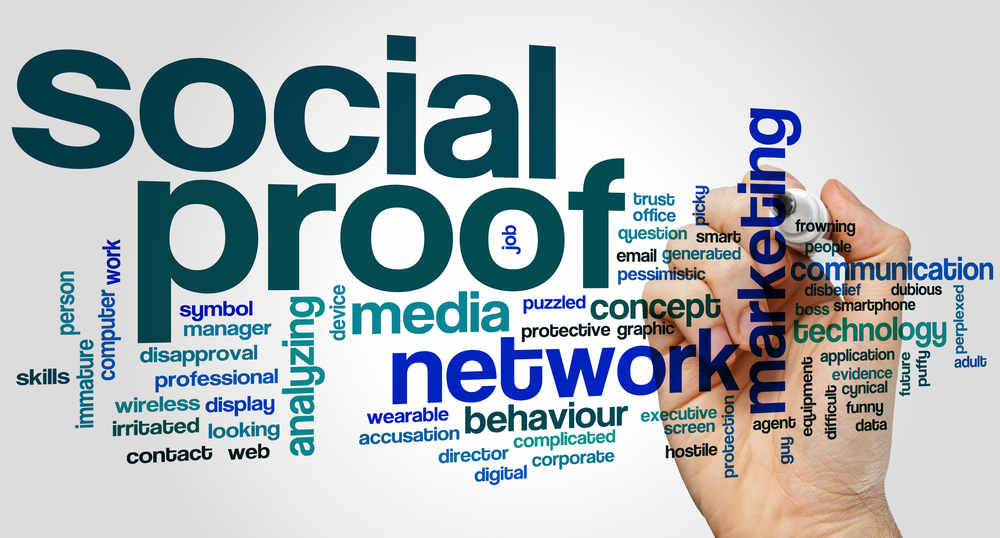In today’s digital world, establishing trust and credibility is crucial, especially in professional networks like LinkedIn. One of the most effective ways to showcase your skills and build reputation is through LinkedIn recommendations. These endorsements from colleagues, clients, or supervisors not only highlight your strengths but also give potential employers or connections a glimpse into your professional character. In this post, we’ll explore what LinkedIn recommendations are, how they work, and why they’re so important for your professional branding.
Why Recommendations Matter on LinkedIn

Let's face it: we all know that job seekers and professionals alike have to stand out in a crowded marketplace. This is where LinkedIn recommendations come into play. They serve as a powerful tool to enhance your profile and validate your expertise in a way that resonates with others. Here are some key reasons why recommendations matter on LinkedIn:
- Social Proof: Recommendations act as endorsements from people who have firsthand experience of your work. If others are willing to vouch for your abilities and character, it adds significant weight to your professional claims. Imagine looking for a new restaurant; you’d likely trust reviews from fellow diners, right? The same concept applies to your professional life.
- Enhanced Visibility: LinkedIn's algorithm favors profiles with recommendations, which can improve your visibility in search results. This means that when people search for skills you possess, your profile stands a greater chance of being found. In essence, recommendations can help you get noticed by recruiters and hiring managers looking for candidates just like you.
- Demonstrates Impact: A well-crafted recommendation can highlight specific projects or achievements, illustrating how your contributions made a difference. This not only informs your professional narrative but also paints a picture of your effectiveness in a team or organization.
- Builds Relationships: Soliciting and giving recommendations fosters networking opportunities. When you reach out to others for a recommendation, it opens a dialogue that might lead to new professional relationships or even collaborations. It’s a great way to reconnect with past colleagues or clients.
- Authenticity: Written recommendations come across as more genuine than simple skill endorsements. They provide context and personal anecdotes that make your profile stand out. Potential employers can appreciate your soft skills and personality traits through detailed recommendations.
In a nutshell, having strong LinkedIn recommendations can be the differentiator that sets you apart from others in your field. They convey your brand story through the words of those who know you best, making your profile more engaging and trustworthy. So, if you haven't yet taken advantage of this feature, now is the perfect time to start asking for and giving recommendations on LinkedIn!
Also Read This: How to Merge Two LinkedIn Accounts and Avoid Profile Duplication
3. How to Request Recommendations on LinkedIn
Asking for a recommendation on LinkedIn might seem daunting, but it doesn't have to be! The key is to make your request personal and thoughtful. Here’s how to go about it effectively:
- Choose the Right People: Think about your past colleagues, supervisors, or clients who can speak positively about your skills and work ethic. Ideally, select those who have a solid understanding of your contributions in a specific role or project.
- Personalize Your Message: When you reach out, always send a personalized connection request or message. Mention why you are asking them specifically and remind them of your work together. Something like, “Hi [Name], I really enjoyed working with you on [Project]. I’d love to ask if you could provide a recommendation reflecting our collaboration.”
- Be Specific: Don’t just ask for a generic recommendation. Let them know which skills or attributes you’d like them to focus on. This helps them write a more targeted and relevant recommendation. For instance, “If you could highlight my project management skills, I would really appreciate it.”
- Timing Matters: Timing your request can make a big difference. Request recommendations after the successful completion of a project or when you know your contributions have made a positive impact. This way, the person is more likely to remember the specifics and provide a detailed recommendation.
- Show Appreciation: After they agree to write a recommendation, thank them! A little gratitude goes a long way. You can follow up after they've posted the recommendation with a thank-you message, acknowledging their effort and support.
Remember, most people are happy to help, especially if you’ve had a good working relationship. Just ensure your request is respectful and considerate of their time!
Also Read This: Linking Your LinkedIn Learning Courses to Your Personal Profile
4. How to Give Meaningful Recommendations
Writing a compelling recommendation can have a significant impact on someone’s career—and it’s easier than you think! Here’s how to craft a recommendation that truly stands out.
- Be Authentic: Your recommendations need to be genuine and sincere. Reflect on your experiences with the individual and ensure that your words truly represent what you feel. Authenticity always shines through and resonates with readers.
- Start with Context: Begin by explaining your relationship with the person. Mention how you know them, how long you've worked together, and in what capacity. This provides valuable context for the reader. For example, "I worked alongside [Name] for three years at [Company] where we collaborated on several key projects."
- Highlight Specific Skills: Focus on specific skills or projects that showcase their abilities. Instead of saying they’re a “great team player,” provide an example. For instance, “During our project on [specific task], [Name] demonstrated exceptional teamwork by…”
- Use Comparisons: If appropriate, compare their skills to others in the field. This doesn’t have to be an explicit statement, but showcasing how they stand out subtly can be very effective. You might say, “In my experience, very few have the strategic vision that [Name] does, which led to [specific achievement].”
- Invite Them to Connect: At the end of your recommendation, consider inviting potential contacts to reach out if they’d like to discuss further. A line like, “Feel free to connect with me if you’d like to know more about my experiences working with [Name]” can encourage networking opportunities.
Ultimately, a meaningful recommendation not only helps the person it’s intended for but also reflects positively on you as a professional. So, take the time to write it with care and respect, and you might just make a lasting difference in someone’s career.
Also Read This: Can You Delete Messages on LinkedIn? How to Manage Conversations
5. Best Practices for LinkedIn Recommendations
When it comes to crafting impactful LinkedIn recommendations, there are several best practices to keep in mind that will not only help you write better recommendations for others but also make your own recommendations shine. Here are some tips:
- Be Specific: Instead of giving generic praise, be specific about the individual’s skills, experiences, and successes. Mention particular projects they excelled in or key traits that stood out. For example, "John led our marketing team through an intense product launch and increased our social media engagement by 150%." This not only showcases their capabilities but also provides a tangible context.
- Keep It Professional: While it's great to add a personal touch, the recommendation should maintain a professional tone. Avoid overly casual language or jokes that could be misinterpreted. Focus on how the person contributes to their field and workplace.
- Use an Engaging Opening: Start with a hook that grabs attention. A strong opening line can make your recommendation stand out. Something like, "It’s rare to find someone as dedicated and innovative as Sarah" sets a positive tone from the get-go.
- Highlight Unique Traits: What sets this individual apart? Is it their creativity, leadership, or analytical skills? Touch on their unique contributions and how they impact the broader team and company.
- Offer a Call to Action: If applicable, end your recommendation with a note encouraging others to connect with the individual or consider them for opportunities. For instance, "If you ever have the opportunity to work with Karen, I highly recommend that you take it!"
By following these best practices, your recommendations will not only reflect your professional relationship with the individual but also enhance their credibility in the eyes of potential employers or clients. Remember, the goal is to paint a vivid picture of the personal and professional attributes that make them remarkable.
Also Read This: What Does 1st, 2nd, and 3rd Mean on LinkedIn? Your Networking Guide
6. Utilizing Recommendations to Enhance Your Profile
LinkedIn recommendations can be a game changer for your profile. They serve as powerful testimonials that highlight your skills, work ethic, and professional relationships. Here’s how you can leverage these endorsements to enhance your LinkedIn presence:
- Add to Your Profile: Ensure that recommendations are prominently displayed on your profile. They can serve as social proof of your abilities and experiences. When potential employers or professionals view your profile, they will likely pay attention to these endorsements more than static job descriptions.
- Curate Thoughtfully: You don’t need to showcase every recommendation you receive. Choose recommendations that highlight different aspects of your expertise. For instance, you might select one that praises your strategic thinking and another that emphasizes your teamwork skills. This variety gives a more rounded impression of your capabilities.
- Reciprocate the Gesture: If someone has taken the time to recommend you, consider returning the favor by writing a recommendation for them. This not only strengthens your network but also demonstrates your commitment to supporting others in your professional community.
- Use Recommendations in Job Applications: When applying for jobs, feel free to reference your recommendations in your cover letter. Mention specific skills or experiences that were highlighted. For example, saying "As highlighted by my former manager, my ability to lead cross-functional teams has consistently driven project success" adds credibility to your claims.
- Stay Active and Updated: Regularly update your profile and seek new recommendations as you evolve in your career. This keeps your profile fresh and relevant. It also shows that you value ongoing professional development and remain engaged in your industry.
In conclusion, utilizing LinkedIn recommendations effectively can significantly enhance your profile’s visibility and attractiveness to potential employers. Remember, the more you engage with your network and the more actively you seek or provide recommendations, the greater the trust and credibility you can build in your professional arena.
Conclusion: The Impact of Recommendations on Your Professional Brand
In today's competitive job market, building trust and credibility is paramount for professionals looking to advance their careers. LinkedIn recommendations play a critical role in shaping your professional brand and can significantly impact how potential employers and connections perceive you. Here are some key points to consider:
- Authenticity Matters: Recommendations from colleagues and supervisors provide social proof of your skills and work ethic. When they come from credible sources, they can enhance your authenticity.
- Visibility and Reach: A well-crafted recommendation increases your profile's visibility to recruiters and peers, making it easier for them to find you.
- Consistency in Branding: Positive endorsements reinforce your professional image, ensuring that your skills and values are consistently represented across your LinkedIn profile and other platforms.
Moreover, recommendations not only reflect your past achievements but they also enhance your chances of being remembered positively in a sea of candidates. Employers are more likely to trust individuals who have been vouched for by others, as it alleviates the uncertainty surrounding hiring decisions.
In conclusion, investing in gathering and showcasing LinkedIn recommendations can greatly enhance your professional brand, establishing you as a reputable and reliable choice in your field. The more qualitative endorsements you have, the stronger your credibility will be, ultimately paving the way for new opportunities and advancements in your career.
 admin
admin








